Fauna of Terrafract's Regions
Northern Region
Frostclaw Predator
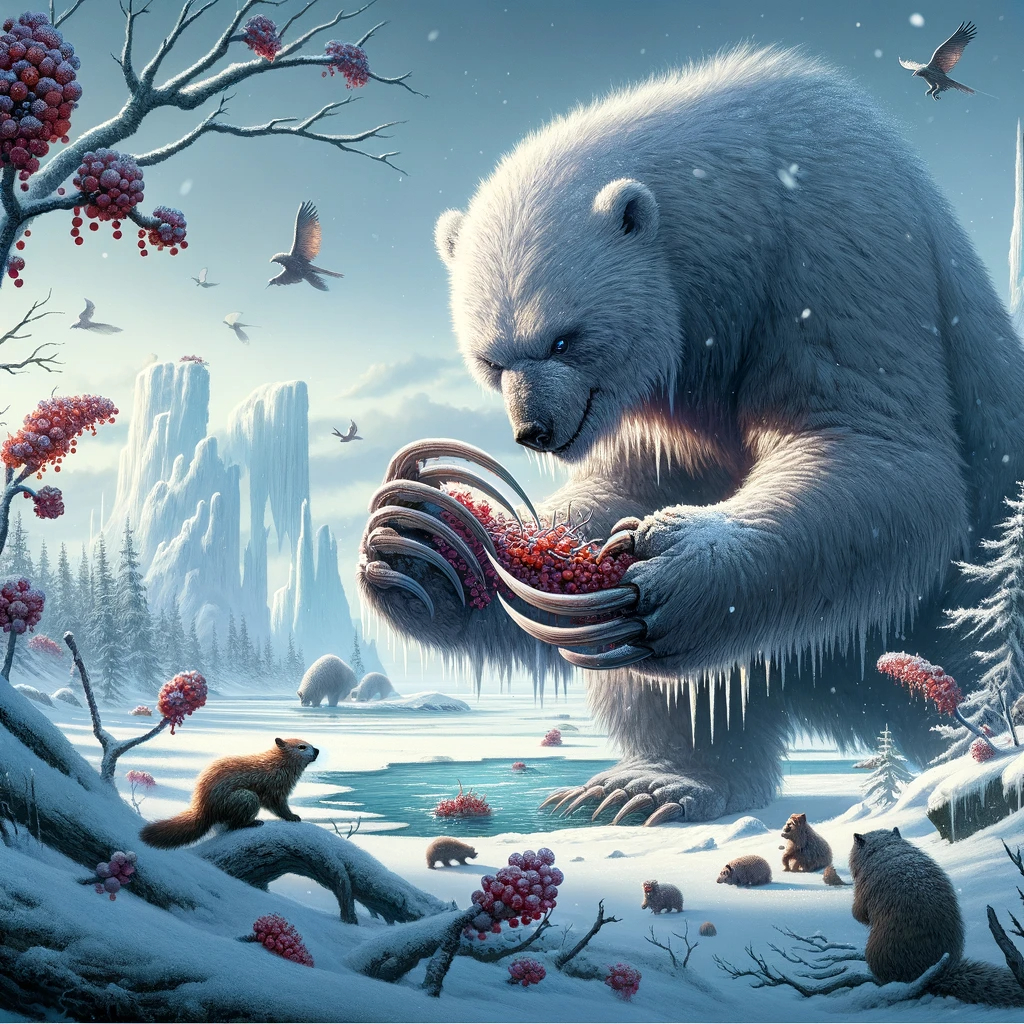
This massive beast is cloaked in thick frost-tinged fur which insulates it against the biting cold. Its large paws are fitted with razor-sharp claws that give it dominion over the snow-covered landscapes, and its daunting size ensures it reigns unchallenged by others.
This creature is usually found near frozen lakes or in Boreal Forests, where larger number of creatures and plants thrive. These locations are optimal hunting grounds year round. Despite being the apex predator of the north this creature is an omnivor who enjoys eating Iceicle berries more than anything.
The Frostclaw Predator has white fur and is usually covered in icicles which dangle from its unkempt fur. When the creature walks those icicles hit eachother, making a beautiful sound that resembles wind chimes.
Borealis Wisp
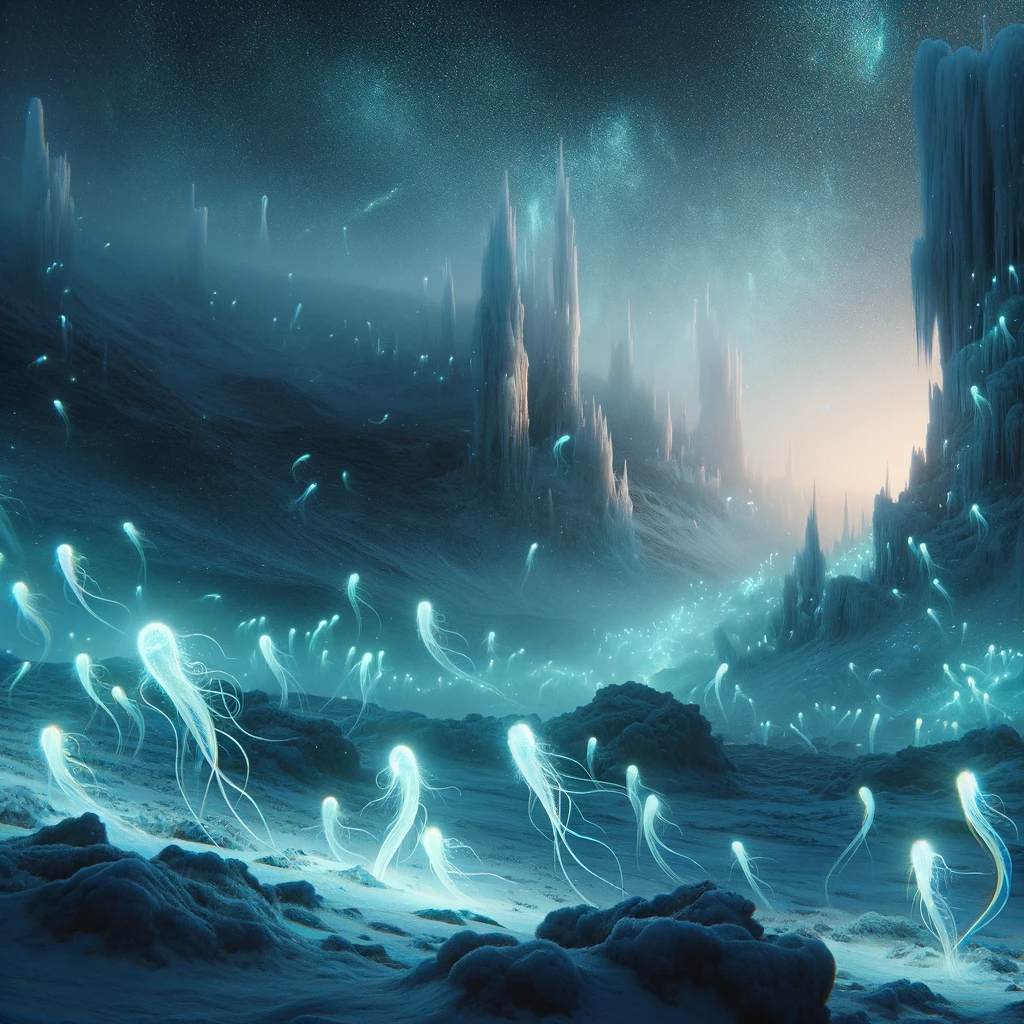
These delicate creatures float gracefully as their long apendages dangle behind them like ghostly veils. Their light serves as a beacon for other species and makes for a captivating spectacle against the backdrop of ice spires and the star-filled sky. These creatures survive by drifting around and consuming particles carried on the icy winds.
Borealis Wisps are in great abundance and dont have much intention behind their movement, making them easy prey for most medium sized creatures that roam the North. When they're ready to reproduce they make their way up the icy peaks, where they lay hundreds of tiny eggs. Once hatched they are already fully developed and begin to drift down the mountains where they can begin to find food.
Grey Hare
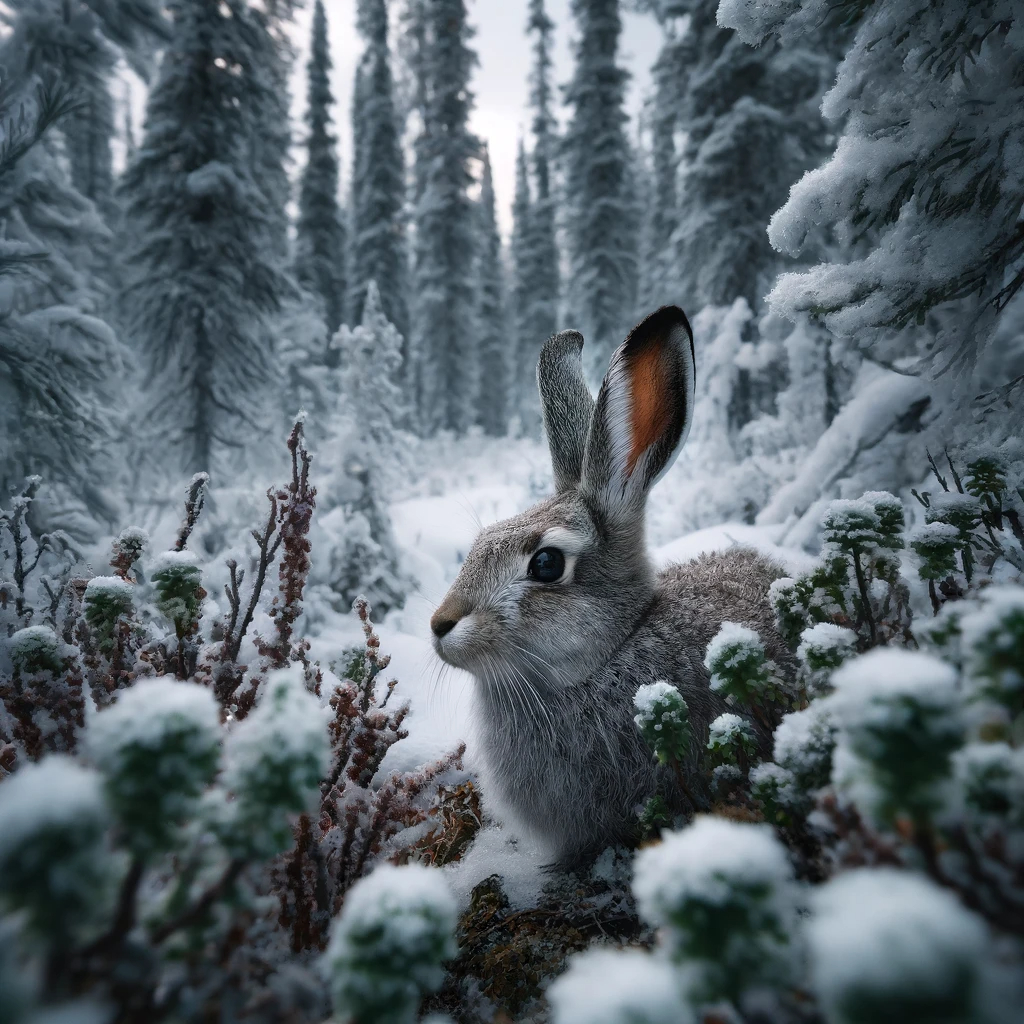
These small rabbbits are abundant in the North, sticking mostly to the Boreal Forests and lush tundras. They make their home by burrowing underground from within shrubs and bushes, which keeps their shelter hidden and protected from weather.
This creature survives by eating berries and roots that stick from ground. If it needs, the Hare can also jump very high to reach berries in trees. This cautious creature is rarely seen in groups and will run if it hears anything approaching. Its strong legs allow it to both jump high and far, however, its also surprisingly fast for such a small creature.
Crystal Scale

This northern fish is known for its beautiful scales that shine like crystals in sunlight. They are mostly found in frozen lakes, but will occasionally venture up rivers to find underground alcoves where they can lay their spawn. The scales are not only beautiful but are also very tough, making them a challenge for most creatures to eat.
The crystal scale has gained a unique adaption in which it builds up a thick layer of ice around its body, which surprisingly doesnt encumber its movement. This adaption is what gives the scales their crystal like glimmer and increased durrability.
This fish survives by eating other small fish and water insects. In spots where the ice has been broken these fish will jump out to grab small creatures that are drinking water, pulling them under and drowning them before eating them.
Aurorix
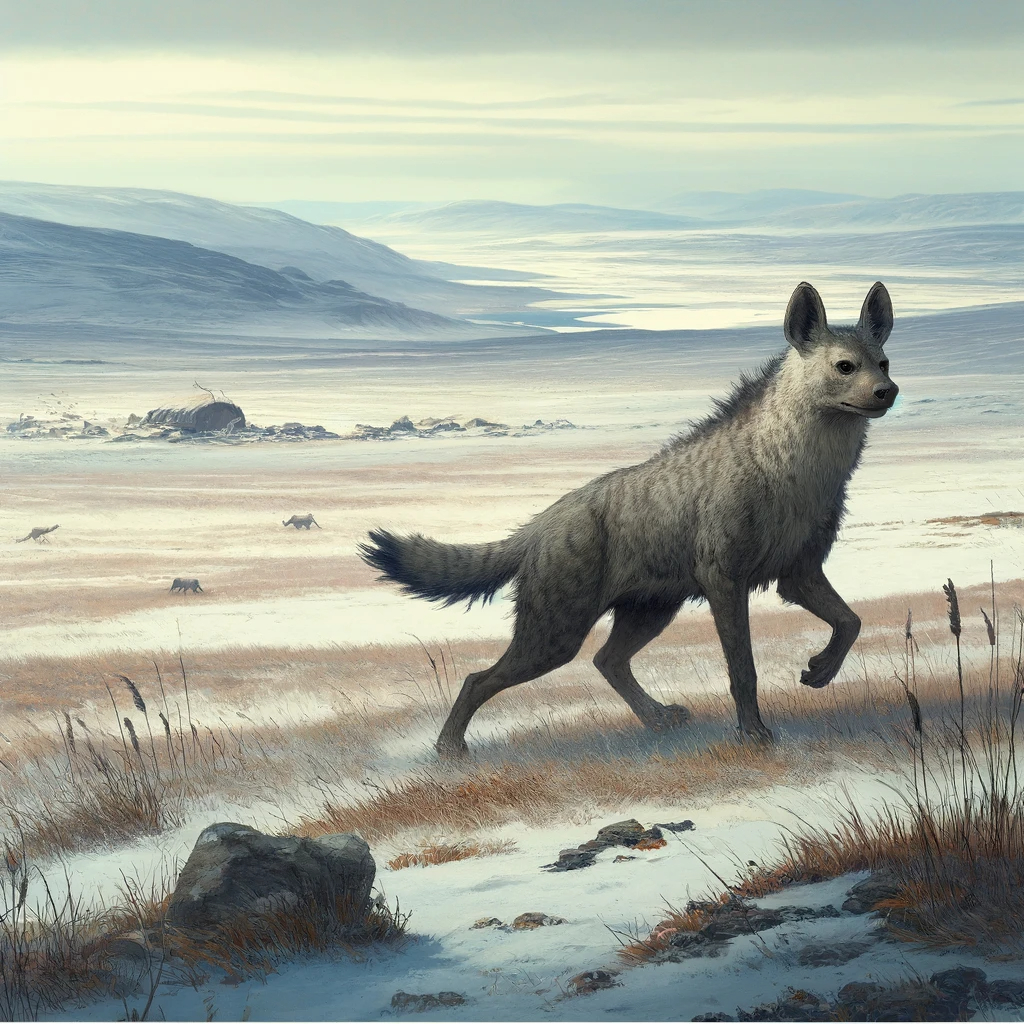
Aurorix are hyena like creatures that roam the plains and forests. They are born with very thin coats of grey or black fir that grow much longer as they get older. The older these creatures get the longer their fur is, which allows them to provide more protection from the weather.
This carnivourous creature is found is very small packs of 1-5, generally sticking with their families until they die or are separated by other means. These creatures roam the barren plains and tundra, working in groups to hunt smaller creatures like Grey Hares or Blizztails that are often found alone.
There have been a few sightings of these creatures in larger packs of 10 or more, and these groups have been reported to hunt larger creatures like Frostclaw Predators with varrying levels of sucess. However, these larger groups are usually dwindled down to only a few due to either alack of food or by being hunted by other creatures. Their main predator is the Frostfeather Scavenger who stays high above and swoops down, grabbing one or more of them and dropping them from extreme heights.
Blizztail
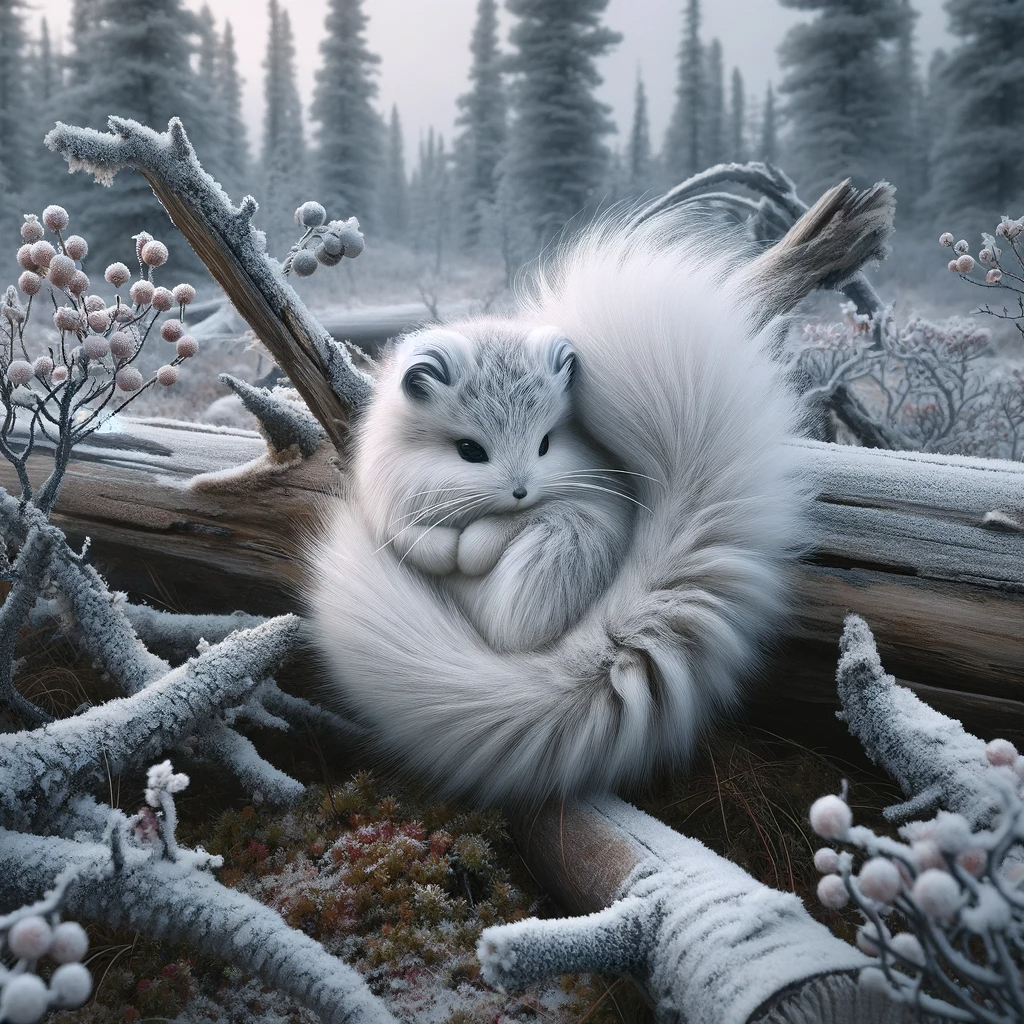
This extremely timid creature avoids contact with all others, immediately running away if it hears something approaching. This creatures most prominint feature is its large fluffy tail which it wraps around itself when trying to sleep. Durring severe weather this creature will use its tail to protect itself from the harsh, cold winds.
As a herbivore this creature usually eats berries that fall from trees and any other low hanging plants it can find. This creature finds shelter in fallen trees and large bushes which it carves out to create a shelter.
This creature has a light grey coat of fur and its large tail is a clear white color. These colors help it blend in with the cold and dull environment of the North. When it wraps its tail around itself it appears almost invisible from a distance.
Frostfeather Scavenger
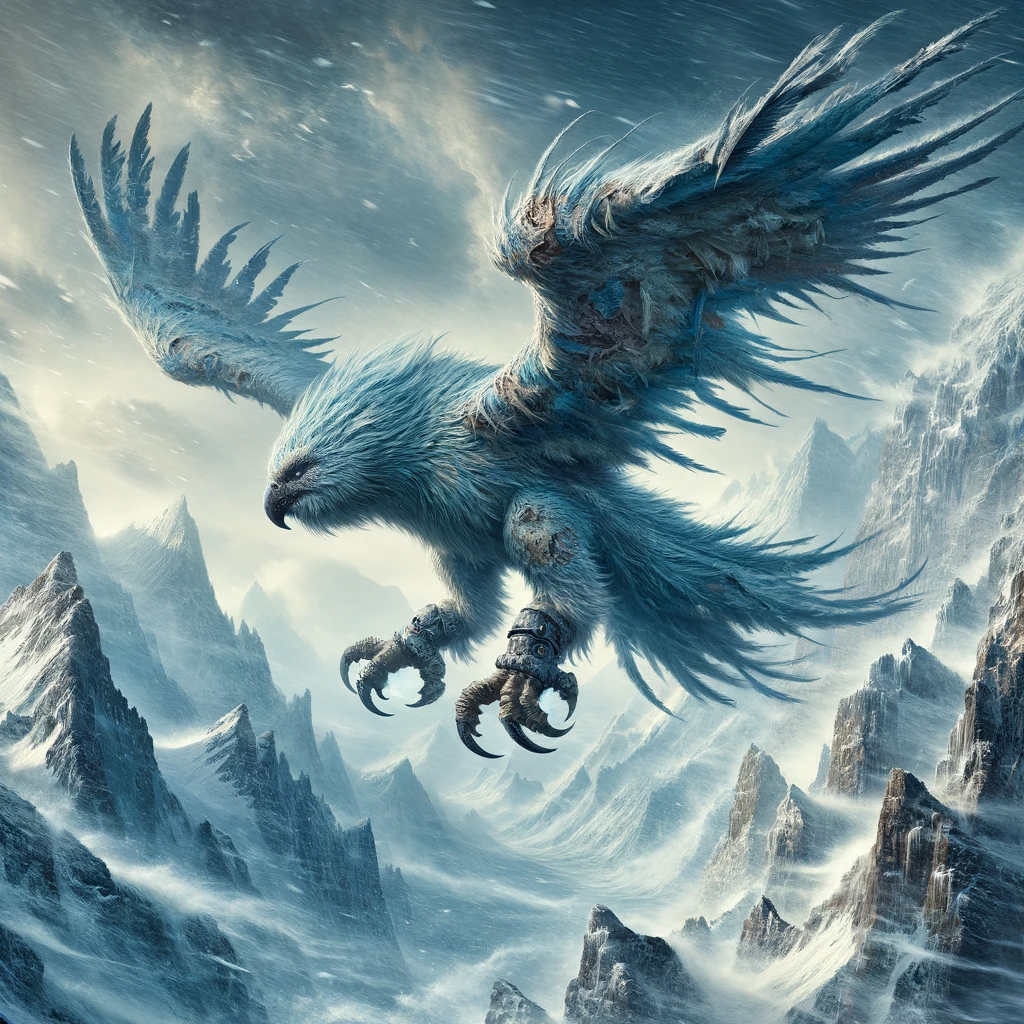
This massive avian creature roams the freezing skys above the northern region. Its body is covered in a thick layer of fur and feathers that protect it from the cold winds at higher altitudes. Its blue and grey color allows it to more easily blend in to the icy peaks, where this creature nests. These creatures usually have many scars and patches of fur missing due to crashing into the sides of icy moutains and rocks, pushed by the violent winds of the north.
This creature has a very strong and long neck that allows it good manuverability of its strong beak, however, it typically uses its massive claws that allow it to firmly grasp creatures. Once its gotten hold of something it quickly flys high into the sky befor dropping the creature, leaving its prey severely injured or dead. This method of hunting is what keeps its sparce numbers safe.
Despite its strong presence in the north, this creature has a hard time reproducing. Its breeding season is short lived durring the winter when the weather becomes too wild to fly through. Durring this time small groups of Frostfeather scavengers are formed, something that usually doesnt happen due to the creatures being solitary creatures.
Snowtrail Caterpillar
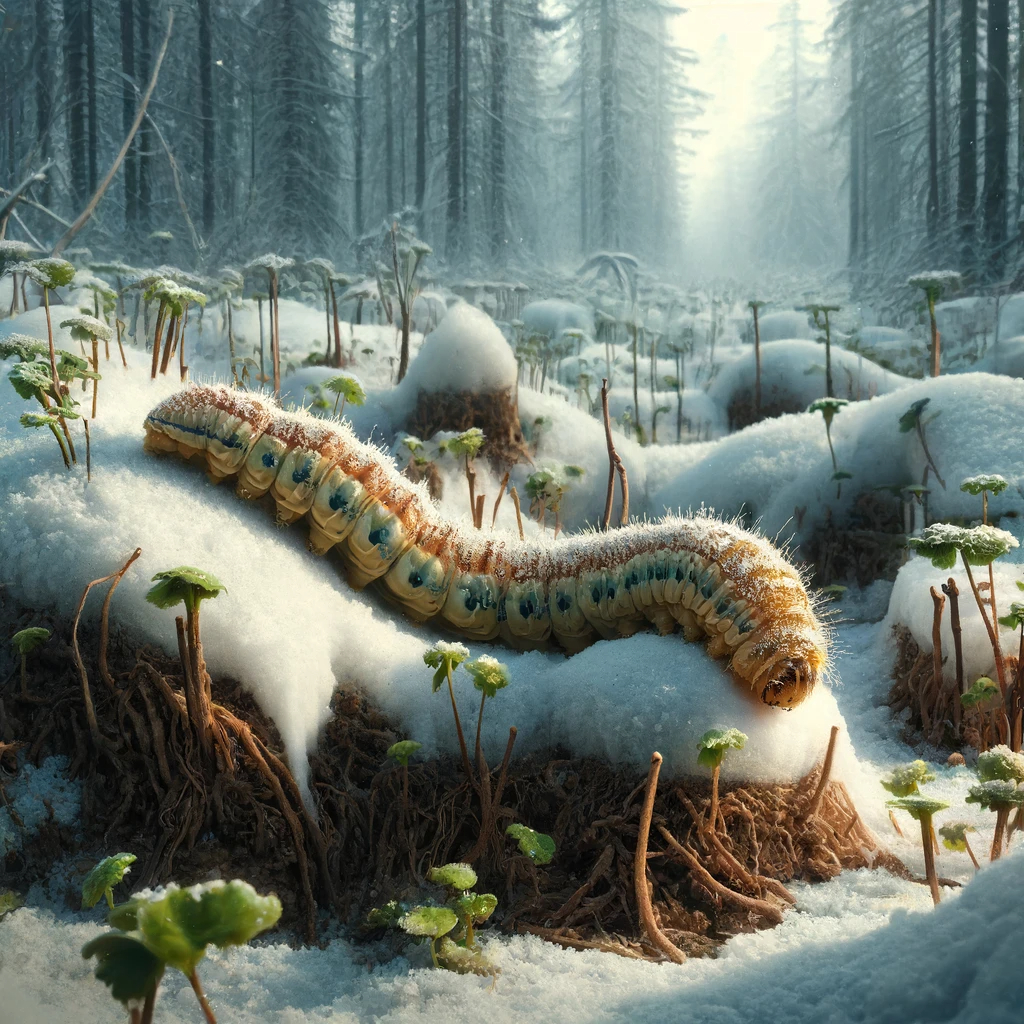
This small insect crawls around under the layers of snow that form after heavy snowfall. These small creatures aimlessly wander in search of food and a place ot hide. Once they're mature enough these insects find a small hole in the ground to begin hybernating.
This insect is in huge abundance and lays its eggs within any vegetation it can find, meaning there are hundreds of these insects anywhere there is folliage. Despite its numbers, it has no way to defend itself and is the most common food source for small creatures of the north. It eats leaves and small roots that stick out of the ground, which means it must constantly stay on the move to find new food sources.
These creatures dont necesarrily work together, but they are often found in large groups. Once they find a place to hybernate they begin to rest for at least a week, in which they begin to morph into a new creature called a "Snowfall Fairy"
Snowfall Fairy
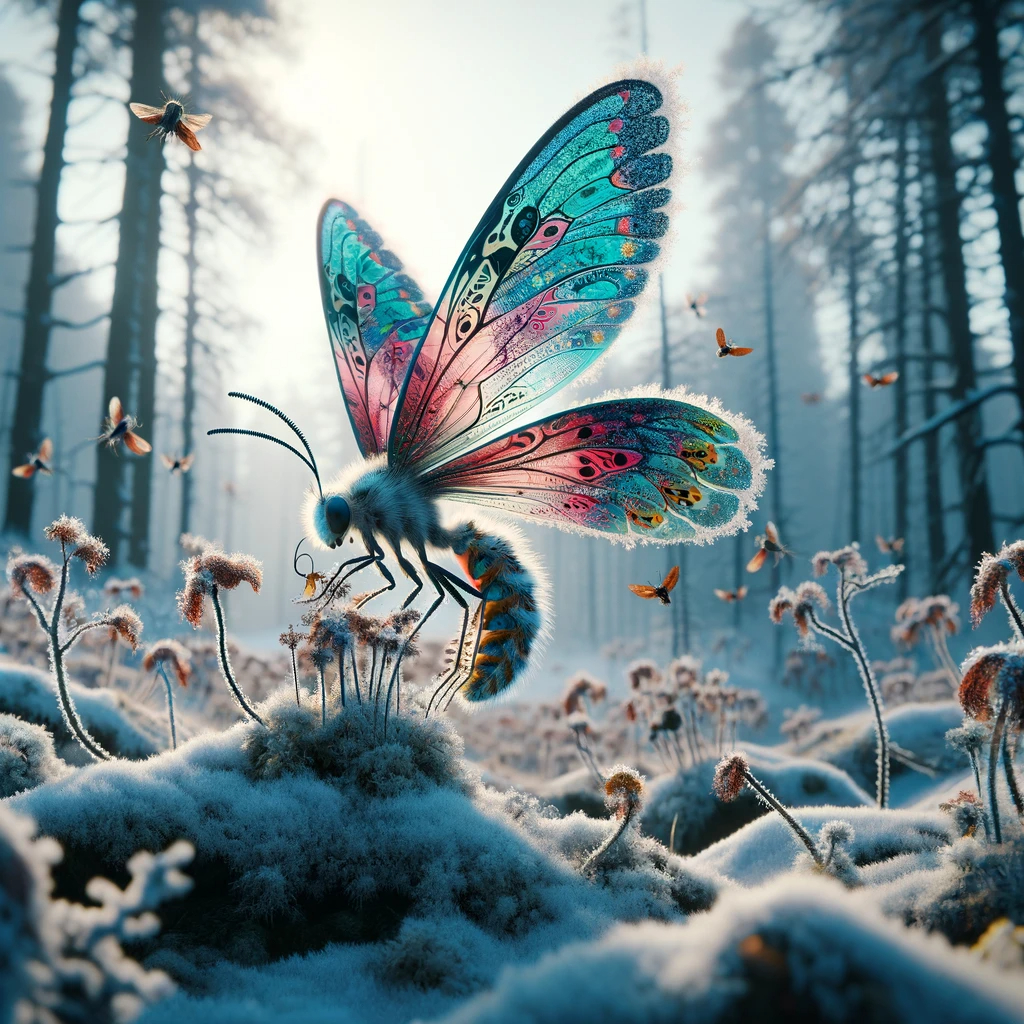
This beautiful insect delicately flutters around the more tame biomes of the northern region. Its vibrant and colorful wings create a mezmerising contrast to the otherwise dull white and grey backdrop. This creature roams in search of nectar from various plants and flowers, which it uses as its primary source of food.
Because the northern region has such a harsh climate these creatures struggle to survive, and many of them eventually leave the north to the east or western regions, where the climate and conditions are more ideal. Varients of these creatures have been discovered in the east and west, however they dont reproduce in these new reigons, meaning the entire population of these eastern and western varients depends on miration.
Southern Region
Canopy Glider
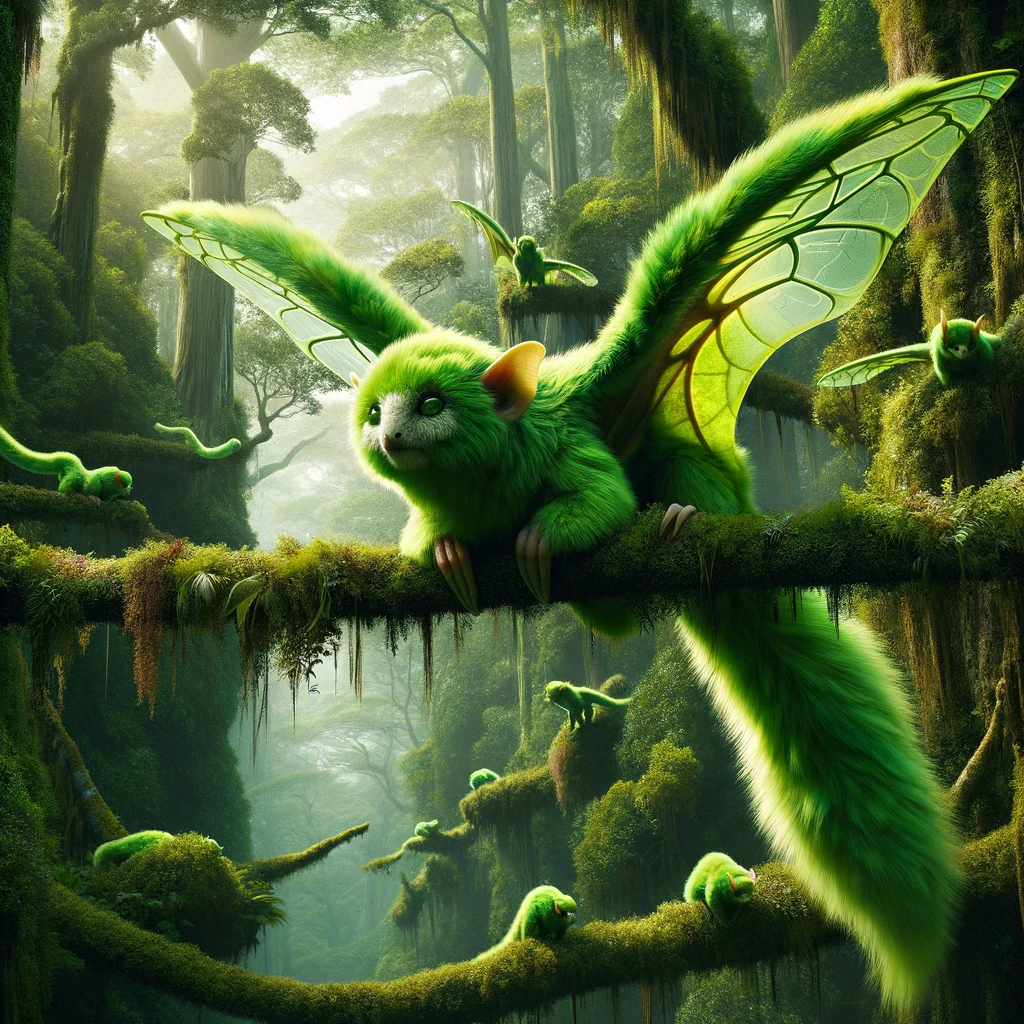
This creatures vibrant green fur blends in with the verdant canopy, while the translucent wing membranes stretched between its limbs allow it to sail silently from tree to tree. Its tail has a tuft of fur at the end which serves both as a rudder and a counterbalance. This creature's keen eyes are adapted for three-dimensional navigation through the layered forest terrain.
These creatures stick to the higher parts of the Canopy Forests, where most predators wont be able to catch or reach them. They don't have homes but create beds in the canopy by gathering dense bushels of leaves in hollow parts of trees or where tree branches cross. They are social creatures that are usually seen in groups of at least 4. In larger forests these creatures will build communities of more that 20 that help each other survive.
Vibrant Dartfrog
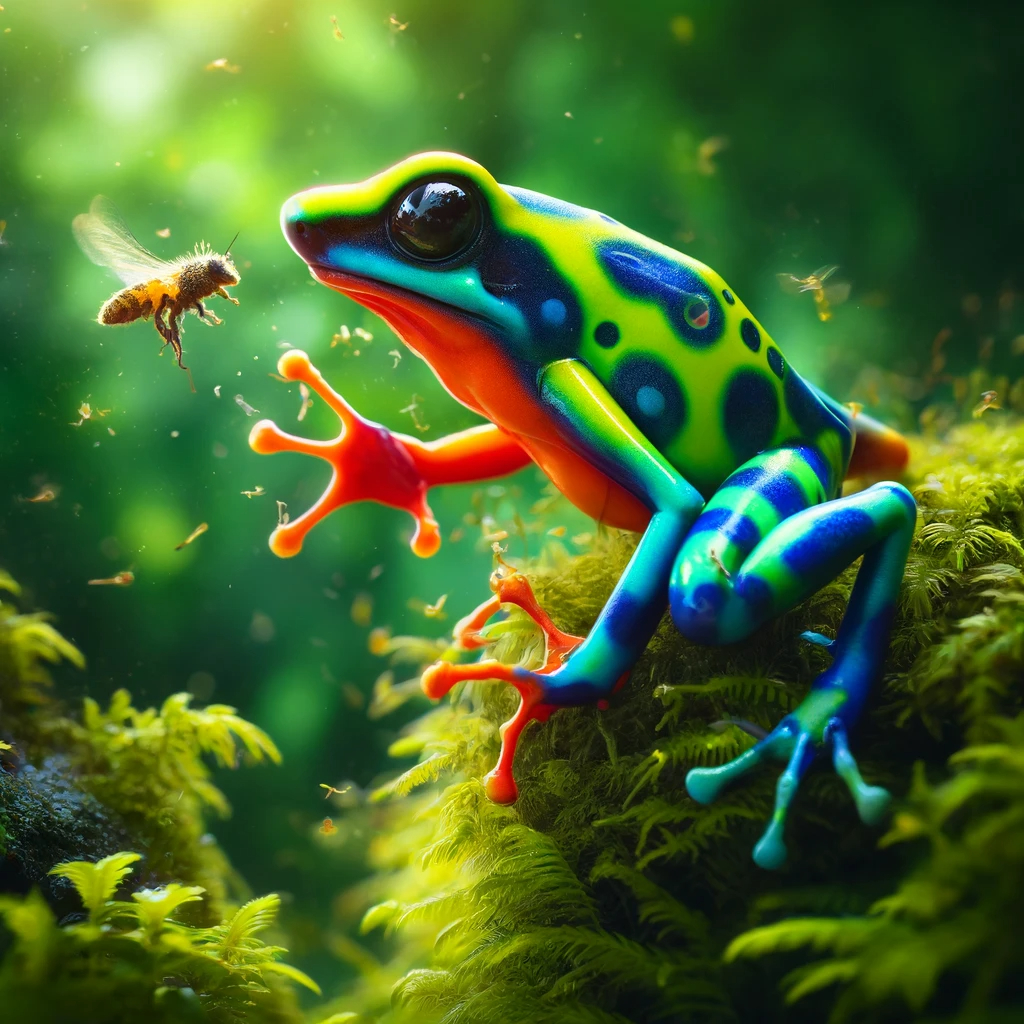
This creature is known for its brightly colored skin and toxic defense mechanism. Its skin helps it blend with the vibrant flora and its wide toes allow for skillful movement through the terrain. This frog is an efficient insect hunter who thrives in the lush forests near bodies of water.
Eastern Region
Tidepool Stalker
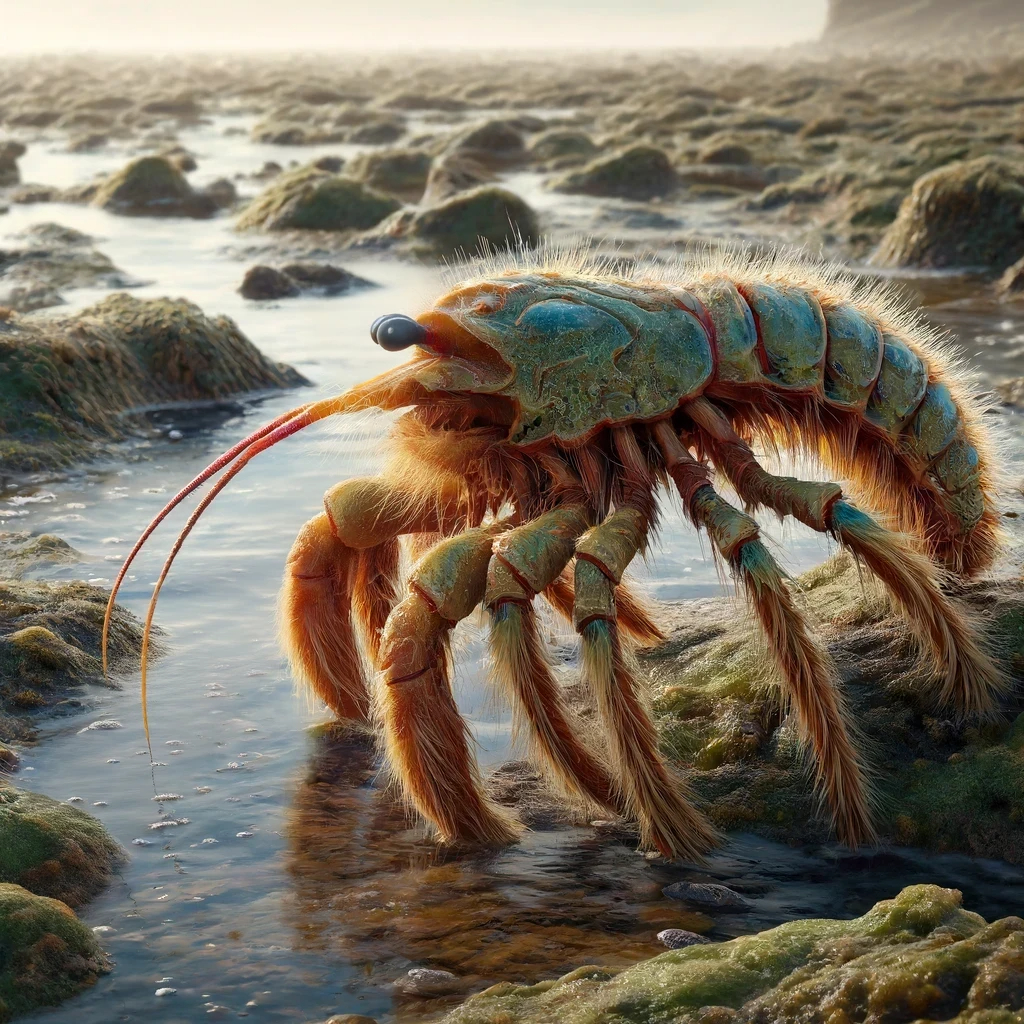
A medium sized crustacean that hunts in intertidal zones, balancing the coastal ecosystem. It has small hairs coming from the creatures entire body giving it a look that almost resembles fur. Its hard shell reflects nearby colors and its short legs move quickly as it crawls on the ground near rivers.
Cliffside Crawler
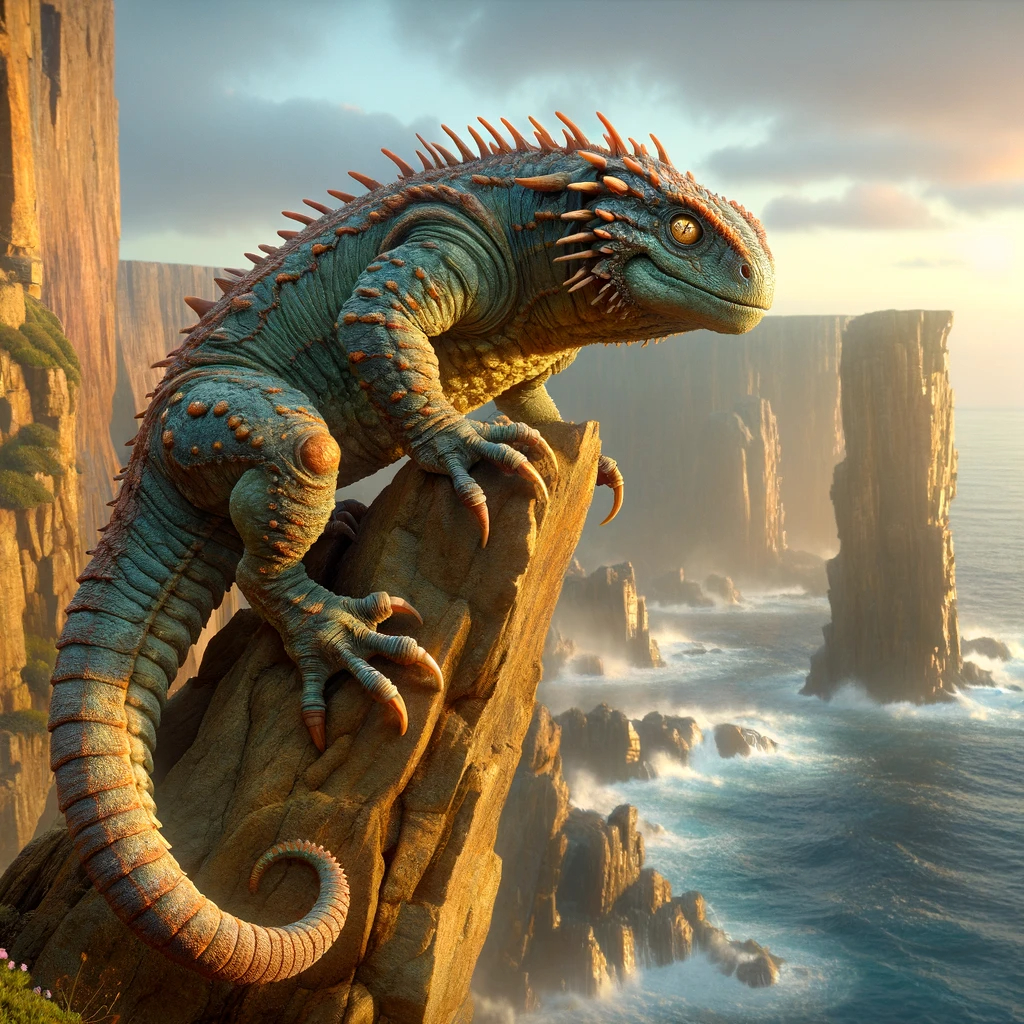
A reptile that has adapted to navigate the rocky cliffs of the coast. This creature has a short tail and a chunky body. Its jagged retractable claws allow it to easily cling to the sides of rock as well as hunt other small creatures. The creature has a colorful set of strong scales which give it a radiant shine during sunrise.
Western Region
Dune Skitter
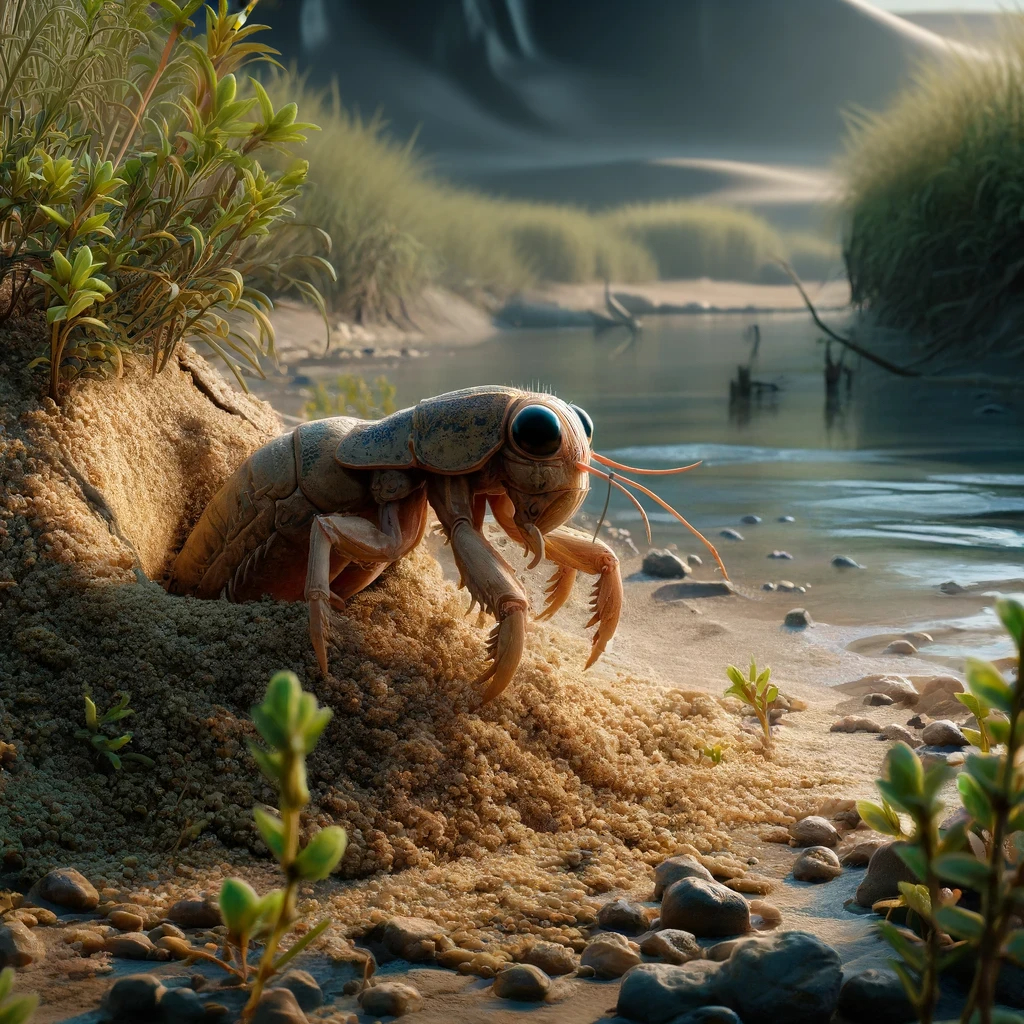
A small insect that burrows in sand during the night. During the day the Dune Skitter ventures into the marshes of the west in order to eat the abundant vegetation if they cant find other insects to eat near their burrows. The dune skitters usually burrow close to rivers and wet areas, where there are more insects and water sources.
Swampwillow Stiltwalker
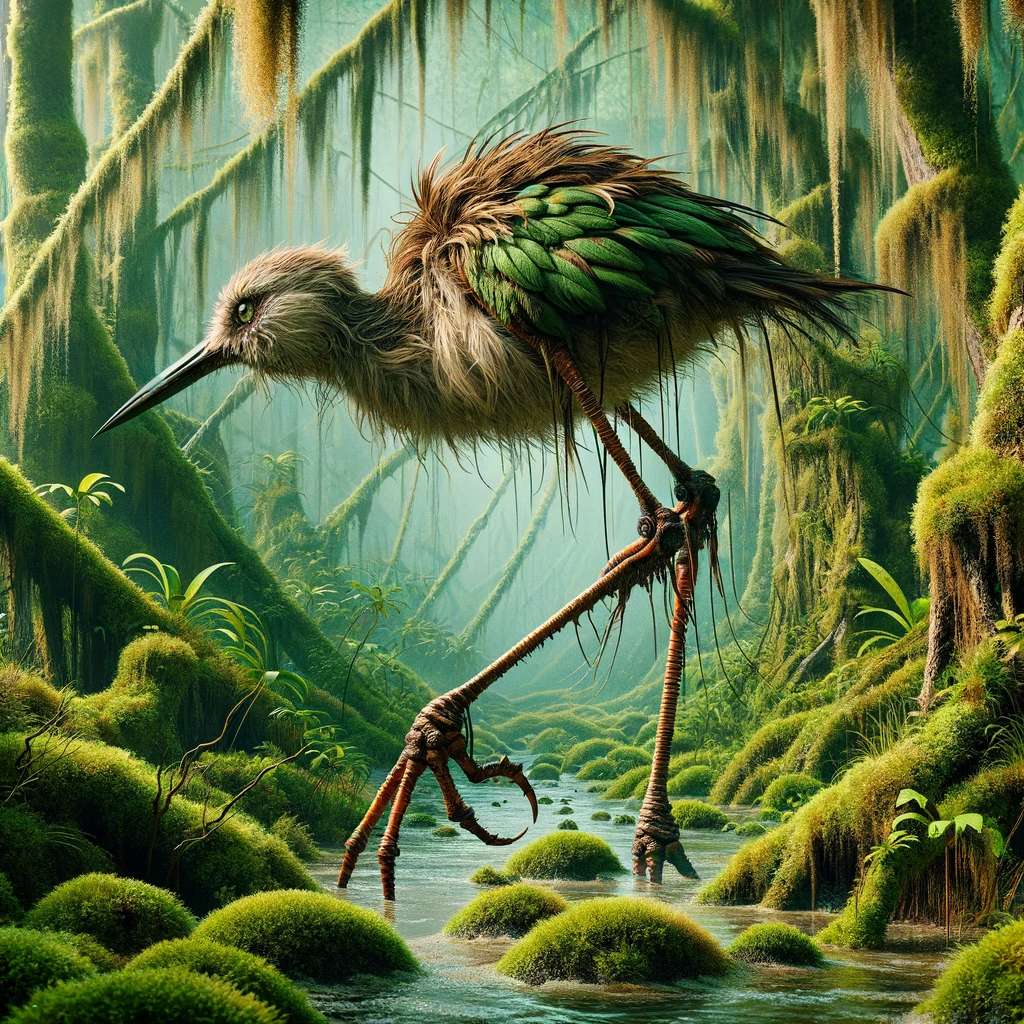
A scruffy bird with long legs that allow it to navigate the marshes. Its long sharp claws easily tear through the moss and vines that cover every corner of the marshes, allowing it to reach into small crevices. Its brown and green feathers help it blend in with the colors of the trees, where these birds rest and make their nests.
Water Grub

The water grub is a small insect that crawls around in the mud and dirt near water sources like rivers and lakes. This creature is abundant in every region of Terrafract because of its incredible adaptive capabilities. The different regions contain their own unique set of colors that Water Grubs can be. The North has blue, white, or grey colors. The South has orange, green, and yellow colors. The East and West have brown, red, and orange. The West also has a purple color which is unique to the marshes. The Wastes hardly sees these creatures due to the lack of water but the few that are seen have either a brown or black color.
Since these creatures are so common they have become the main food source for many fish and some small creatures that reside around rivers and lakes. Their very thin shell protects them from getting scraped or stabbed by anything underground, but provides no protection from other creatures. These creatures consume dirt and mud as they crawl, which allows them to produce incredible fertilizer.
The nutrient rich soil that follows these creatures helps plant growth, so some farmers in the South have begun using them in their farms as a way to boost production. Farmers don't have to worry about their plants being eaten either since these creatures only eat dirt and mud.
Spinderack

The Spinderack is a large arachnid that lives in the marshlands of the Western region. These creatures hide up high, inside the leaves of tall willow trees, jumping out when a creature walks under them. Their long legs and light bodies allow them to wrap around the trees and vines to climb up. Their bodies have a unique leafy green camouflage pattern that contrasts their white body.
This creature is slightly smaller than an average sized man. Their large size allows them to wrap around big creatures, squeezing them to death before wrapping them in webbing and carrying it up to their tree nest. Despite most spiders using webs to make their nest this variant uses leaves and vines from the surrounding environment, which allows their nest to blend in seamlessly with the trees.
Muck Rat

This small creature has rough leathery skin that is usually covered in dirt and mud. It resdies within the swamps and marshes, where it can easily dig through the soft soil to hide and create a shelter. This creature is a greyish-orange color but is usually covered in dirt making it appear brown.
These creatures have very little defensive mechanisms aside from digging down to hide, so they are preyed uppon by most carnivors. They are herbivors that eat leaves and other small plants, however their favorite food is roots they find while digging undergound. Their claws are dull but long which makes it easy to scoop dirt.
Mothren
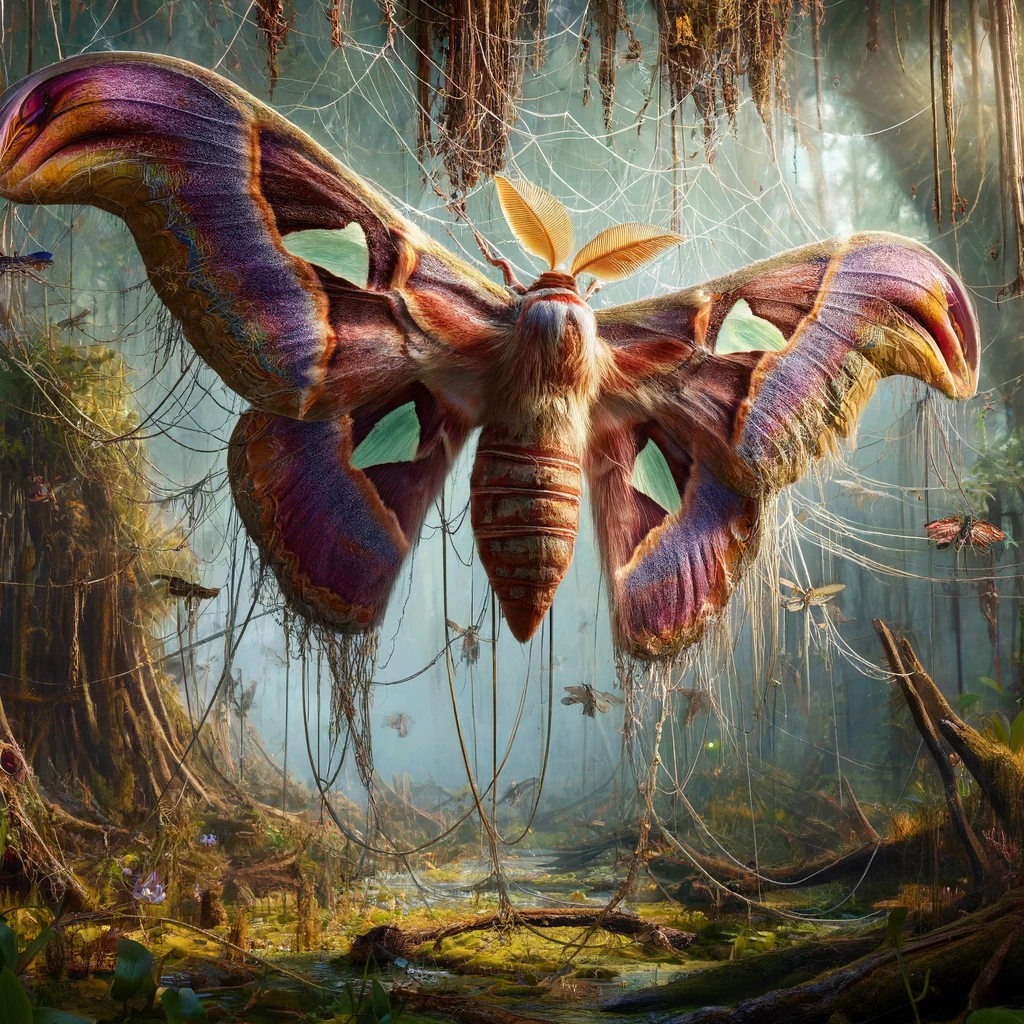
This large moth is found within Marshes because of the abundant hanging plantlife. This creature has a brown-purple gradient of colors, except for its large translucent wings. This creature produces webs which it uses to make hammocks between trees, which allows the creature to easily walk around and stop flying so it can eat.
These moths are the natural prey of Spinderacks, so they often make vast and intricate web systems which make movement for any predators difficult. They are herbivores that live in small groups of 2-5, however, they spend a majority of their time alone and eating. A common sign of Mothrens is a large patch of missing or dead leaves. To scare away smaller creatures they will spread out their large wings which display a unique and colorful pattern. This pattern is meant to frighten other creatures but rarely works if they are angry.
Dragonfly

Dragonflys are small but extremely quick insects that buzz around the marshes of the west. They hide within any type of plant life they can find, creating a temporary shelter. They have short-lived life's but lay many eggs at once so there are usually a large abundance of them in the marshes.
These small creatures come in vibrant colors and have rough skin. Their tails have spikes that allow them to easily stick and support themselves to any surface. Dragonflys have very light wings and their torso is covered in many small hairs that collect water and nectar. Using the comb like spikes on their legs they scoop up drops of nectar and water to drink.
Lobrass

Swamp Beetle

The Wastes
Sandshifter Beetle

This desert dwelling arthropod burrows into the sand, emerging at night to feed on the light vegetation. Its hard exoskeleton protects it from other small insects and its hard long arms allow it to quickly dig into mud or sand.
Duskprowler Jackal

These nocturnal canines roam The Wastes in packs, their long matted fur protects them from the sandy winds that frequent the region. These creatures are small but live in large groups. To sustain their large groups these creatures are constantly scavenging and hunting.